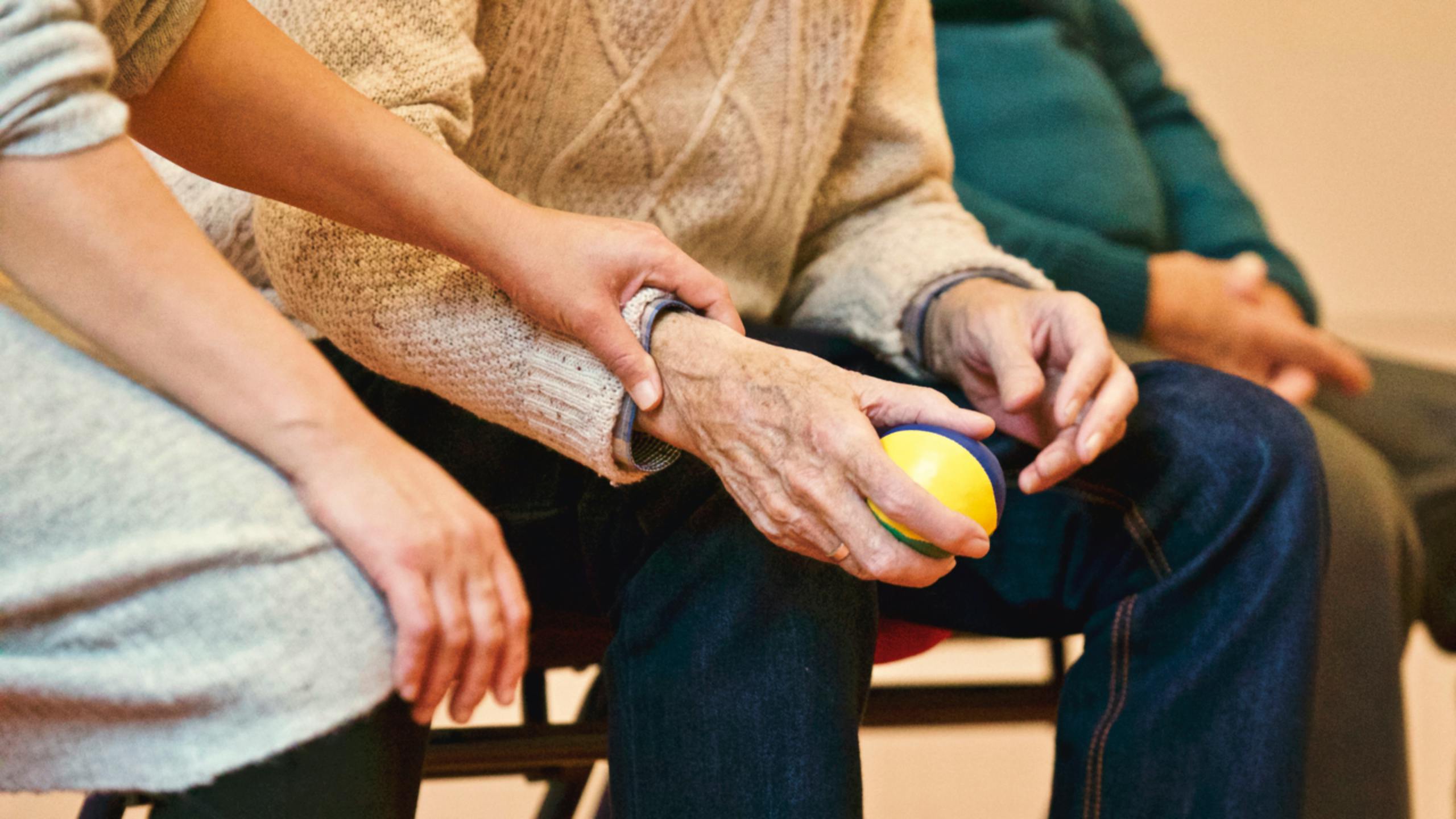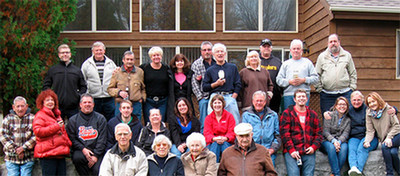Flattening the power curve with patient-centred research

Cathie Hofstetter is determined that her story will be different. She’s the third generation of her family to live with rheumatoid arthritis.
Her great-uncle Ambrose, was hospitalized for the last 25 years of his life. Cathie can only imagine how this would have destroyed all hope he had of any kind of ‘normal’ life.

Cathie's extended family
Cathie’s aunt was diagnosed at the same age as Cathie. Despite the disability and debilitation from the disease, her aunt worked for General Electric until she was 65 years old.
“I’ve lived with rheumatoid arthritis and osteoarthritis for 29 years, since I was 36,” says Cathie. “This story has to end differently for me and for the fourth generation that will be diagnosed with this disease. The only hope is research.”
Cathie became involved with Western’s Bone and Joint Institute (BJI) as a patient-partner four years ago. Patient-partners are involved directly with research teams.They ontribute their expertise in many ways - from speaking with trainees about their lived experiences and providing input on questionnaires to giving feedback on new research project ideas for things like wearable technology.
Dave Walton believes that patient-partners like Cathie are integral to the research process - from the beginning. Dave is a physiotherapist, associate professor of Physical Therapy at Western University and a BJI Scientist. His clinical research lab specializes in musculoskeletal pain and brings together a dozen thesis-based students from various disciplines, such as microbiology, endocrinology and critical social science.
From the very beginning of his research projects, he works closely with a patient-partner. “It gives me some degree of confidence that the questions I’m asking are important,” says Dave. “What we’re trying to do is flatten the power curve. We want patients, researchers and clinicians on the same playing field. I need eyes on my work from people whose lives are impacted by what I do.”
He believes a patient-centred approach avoids stigmatizing and marginalizing patients as well. Much of the research on pain and wellness has been developed with a European, urban-centric, colonial lens. To be more inclusive as well as impactful, it is increasingly important to bring diversity to research questions. Engaging with patient-partners early can help to identify more meaningful research like research for wearable technology,” says Cathie. “I can talk to the researchers on the same level and they share their questions and ideas with me.”
Cathie and Dave’s vision and experience with this type of partnership among researcher and community partners is encouraged and supported throughout the BJI. Jann Paquette-Warren, Manager of Research & Innovation at BJI explained that seeking the perspective of non-academic experts such as patients, clinicians, business and community representatives is a core principle at the institute.
As a liaison among community partners and researchers, she facilitates relationship building to ensure that experiential knowledge informs not only individual research projects, but also Institute-wide research priorities, events, and programs.
“The Bone and Joint Institute provides a wonderful atmosphere, one that is so different from other research institutions and organizations. I [Cathie] feel so hopeful for the future because of how we consider project ideas together and what patients can do for research. It’s going to change the future!”

